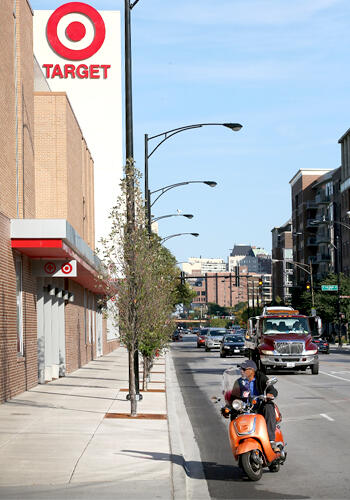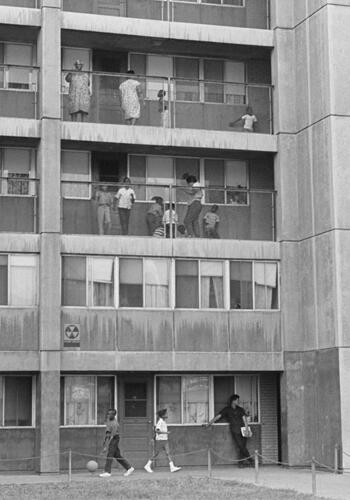The on-and-off redevelopment of Cabrini-Green, the Chicago low-income tenement complex infamous for its history of violent crime, might finally get back on track after a city panel voted to spend another $600 million in tax-increment financing.
The Chicago Community Development Commission, an advisory panel, overwhelmingly agreed to extend the life of the 1997 TIF another 12 years. That pushes the controversial TIF that started as a $300 million makeover of the 340 acres on the Near North side to the city council for approval.
It also drives the final price tag on the city’s investment in redevelopment of the projects that once housed as many as 20,000 residents to nearly $1 billion. Cabrini-Green’s TIF ranks as the fourth-largest by revenue among the nearly 140 in the city. It has raised $350 million in taxes as the neighborhood gentrified with condominiums, townhouses and a smattering of retail businesses that include Target and Starbucks. The area also has a new elementary school and public parks.

Present day site where Cabrini-Green homes used to stand (Getty)
The Chicago Housing Authority, which is the steward of the property owned by the Department of Housing and Urban Development, has partnered with developers to build mixed-use housing such as the New City complex but big swaths of vacant land still remain. The CHA has plans to build another 2,300 housing units with a federal mandate that 700 of them include public housing.
“CHA and our development partners have now delivered more than 3,500 mixed-income homes to the former Cabrini-Green site,” the CHA said in an emailed statement.
But delays caused by the pandemic, materials price hikes and changes in CHA leadership have stalled at least three projects since 2017.
“My goal is to get something built on the rest of the CHA properties,” said Alderman Walter Burnett, who spent his youth in Cabrini-Green and now represents the neighborhood. He’s been advocating for affordable and low-income housing on the sites since the late 1990s and, along with Mayor Lori Lightfoot, has been an integral player in extending the TIF. Lightfoot was instrumental in getting the state to agree to extend the Near North TIF district last year.

Cabrini-Green in 1966 (Getty)
Cabrini-Green has a long history that didn’t always involve drug dealing and gang wars. Construction began in 1942 and the area was once a thriving community of families with limited means spread throughout 23 high-rise buildings and row houses. It evolved into an area rife with crime and drugs in the 1970s, with buildings known for busted elevators, windows and lights as gangs began to control the properties.
In 1981, then Mayor Jane Byrne moved into one of the apartments as a means of quelling growing crime and murders there. She only stayed about a week but declared her mission successful.
When Mayor Richard M. Daley pushed for the teardown of the project in 1995, he vowed to keep public housing as part of it, telling many residents they would eventually be able to move back in.
The last tower came down in 2011 and there’s been limited redevelopment since. Some residents are still waiting to move back in. Last month, Holsten Real Estate Development opened the doors to a 102-unit mixed-income housing development called Elm 551 at Parkside Apartments, the fourth phase of the Parkside of Old Town project completed with the CHA and TIF financing.
The CHA has three other parcels in different stages of development, it said. Those include requests for proposals to redevelop 438 vacant row houses with a developer expected to be selected by early next year.
Demolition of the Near North High School site, which was held up by the pandemic, is expected to be completed by fall for redevelopment and the final phase of the Parkside development is in the planning process. A new development at Oak and Larrabee streets also is being planned, the CHA said. Those last two are expected to add another 177 homes.
To get more going, the community development panel agreed the subsidy is a must-have. “CHA cannot do it alone,” Maurice Cox, head of the city’s Department of Planning and Development and a panel member, said. “These TIF dollars are key.”
Assuming the full council gives the go-ahead to the TIF extension and other city permit processes move along in a timely manner, Burnett said the clock is ticking.
“We’ve got 10 years to try to get everything in the ground until we don’t have a subsidy to be able to do it,” he said. “I want to fulfill our original commitment to bring back mixed housing. If it was up to me, it would be done already.”
